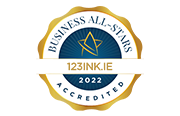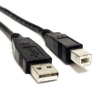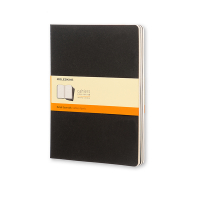- Over 400,000 clients!
- Nationwide delivery from €4.99 (max €6.99)
Menu
My 123ink.ie
This site is protected by reCAPTCHA and the Google
Privacy Policy and
Terms of Service apply.
Don't forget the paper!
A4 80g 123ink premium copy paper 2,500 sheets

Popular products
Planning an effective meeting

Meetings are important! They are a great opportunity to get a team or group of people together to discuss and exchange information or opinions, work on ideas, make decisions and create a plan. In fact, research has found that we spend up to 35% of our time at work in meetings and this percentage only increases as you climb the management chain. Ideally, meetings should end with resolutions, action plans and understanding, but this is often not the case.
Unfortunately, meetings can often be long, produce no outputs and end up being a waste of time. This can happen for a variety of reasons, but usually it comes down to poor planning and a lack of clear purpose. In order to avoid this and ensure your meeting is productive, it is best to create a step-by-step plan to guide the planning and execution of your meeting.
Following the seven steps below, you should be able to plan an efficient meeting that is purposeful, productive and achieves your main objectives.
It can be frustrating when you’re invited to a meeting and you don’t know what the purpose is, so it’s always good to make sure everyone understands what the goal of the meeting is. Outline the issues or objectives of the meeting so the attendees will know what to expect and can prepare accordingly.
Your agenda should include all of the major points that need to be addressed, arranged in order of their importance. Include a brief description or some background information so all attendees understand each point and their importance. Create a timetable with allocated time slots for each topic, then everyone can be prepared for how long each topic will take and what is coming next in the discussion.
When preparing for your meeting, you will need to take some things into consideration. Below are three things you may want to think about:
If you feel you may need some of these things for your meeting, it is best to have them prepared ahead of time. By preparing everything you need, your meeting should run smoothly.
If all meeting participants are well prepared and ready for the meeting, it should run smoothly with little time-wasting.
Start your meeting at the time you have scheduled it for. If some participants are running late, they will know they must be punctual the next time because you have not waited for them. Try to adhere to the times allotted on the agenda as much as possible and if some discussions are running over time, perhaps you need a follow-up meeting to address these topics in more detail. Be mindful of the time throughout the meeting and aim to end the meeting on time, rather than extending it indefinitely.
Managing your time in a meeting shows respect for others and their time, but also ensures everyone stays engaged and motivated. If you don’t get the opportunity to touch on some of the less-important points on the agenda, you can schedule a follow-up meeting for a late date.
If you think the discussion is veering off-topic, don’t be afraid to redirect back to the points on the agenda. Stick to the agenda as best you can throughout the meeting and remind participants of the purpose of the meeting, if necessary.
It can be a challenge to keep a whole team of people focused and engaged for the duration of the meeting, but if you want to have an effective meeting with results, this is a must.
At this point, you should be assigning action points to individuals. By doing so, you are reducing the possibility of tasks being duplicated or ignored, because one person is accountable for it. Perhaps set a deadline for any assigned tasks, as this will create a sense of urgency and ensure the task is completed within a reasonable timeframe.
Encourage people to take note of any points or actions that concern them in their diary. This way, they have a record of when a task must be carried out and are not likely to forget about it!
By summarising, assigning action points and distributing meeting minutes, it is almost guaranteed that your decisions turn into tangible outcomes. You should see your projects or goals progressing in no time!
Ultimately, you shouldn’t waste people’s time and effort on a meeting without following up afterwards. Be it in the form of an in-person check in, an email or an additional meeting, following up will improve the efficiency of your meeting and the end-results.
If there are any Office Supplies you think may help to make your meetings more efficient, contact us and we can help put an order through for you!
Unfortunately, meetings can often be long, produce no outputs and end up being a waste of time. This can happen for a variety of reasons, but usually it comes down to poor planning and a lack of clear purpose. In order to avoid this and ensure your meeting is productive, it is best to create a step-by-step plan to guide the planning and execution of your meeting.
Following the seven steps below, you should be able to plan an efficient meeting that is purposeful, productive and achieves your main objectives.
Step 1. Determine what the purpose of the meeting is
It’s impossible to get a good outcome if you don’t know what the outcome you want is, so before you set up the meeting, think about the purpose of the meeting. Once you have determined why you feel this meet-up is necessary, you can identify who needs to be there and communicate this with them.It can be frustrating when you’re invited to a meeting and you don’t know what the purpose is, so it’s always good to make sure everyone understands what the goal of the meeting is. Outline the issues or objectives of the meeting so the attendees will know what to expect and can prepare accordingly.
Could this have been an email …?
We have all sat through a long-winded meeting that has been unnecessary. Perhaps you should consider whether a meeting is actually necessary or if the matter can be resolved quickly through an email. Meetings are suited to urgent discussions and decision-making. If the information can be communicated via email, then it is best not to occupy people’s time with an unnecessary meet-up.Step 2. Create an agenda ahead of time
You should create a clear agenda of what will be discussed in the meeting and distribute it to everyone at least 24 hours beforehand. Without a clear agenda, meetings can drift off-topic, fail to address the important issues and run for much longer than intended.Your agenda should include all of the major points that need to be addressed, arranged in order of their importance. Include a brief description or some background information so all attendees understand each point and their importance. Create a timetable with allocated time slots for each topic, then everyone can be prepared for how long each topic will take and what is coming next in the discussion.
Be flexible!
While creating a structured agenda is advised, sometimes you will have to make adjustments to the agenda mid-meeting. Perhaps one discussion is taking longer than planned or more pressing matters have come to the table! Be prepared to make some changes to the running order of your meeting or postpone some of the not-so-urgent points to another time. It may be a good idea to include some buffer time in your meeting schedule, so you do have a little extra time if there are unexpected issues.Outline what your desired outcomes are
For each item on your agenda, you should outline what your desired outcome is. Are you hoping for a final decision, a plan of action or new ideas? If you include what your end-goal is, everyone will understand the aim of the meeting and what is expected of them. This can help ensure the meeting is productive and you leave with your desired outcomes.Step 3. Prepare materials or equipment in advance
Take some time to prepare any materials or equipment you may need for the meeting. Coming to a meeting unprepared will likely cause delays and frustration, as you may require some extra time before starting the meeting. However, if you had all of your material or equipment prepped and ready, you could start your meeting with no difficulties.When preparing for your meeting, you will need to take some things into consideration. Below are three things you may want to think about:
- If you need visual aids to support any of your points, you will need to ensure your meeting room is set up to show presentation slides with graphs, charts or images. In the case that the meeting venue cannot facilitate this, you may have to print and handout physical copies of the information instead.
- If you are brainstorming or would like to visualise something, then a whiteboard may be needed. If there is no whiteboard at the venue, a table flipchat could be a handy replacement!
- Will you be taking notes during this meeting? If so, you may want to remember to bring your laptop or tablet with you. Spare notebooks and pens are always a good idea, in case anyone has forgotten theirs!
If you feel you may need some of these things for your meeting, it is best to have them prepared ahead of time. By preparing everything you need, your meeting should run smoothly.
Encourage all participants to come prepared too!
You should encourage anyone who will be attending the meeting to also come prepared. The first thing they should do is re-read through the agenda, to consider any questions they may need to ask or if there is any useful research or documentation they would like to add.If all meeting participants are well prepared and ready for the meeting, it should run smoothly with little time-wasting.
Step 4. Manage your time
Managing your time whilst in a meeting is extremely important! Often, meetings can start late, go on for too long or spend too much time on minor topics that are not as important. This can frustrate all attendees and reduce productivity, as they feel their time is being wasted.Start your meeting at the time you have scheduled it for. If some participants are running late, they will know they must be punctual the next time because you have not waited for them. Try to adhere to the times allotted on the agenda as much as possible and if some discussions are running over time, perhaps you need a follow-up meeting to address these topics in more detail. Be mindful of the time throughout the meeting and aim to end the meeting on time, rather than extending it indefinitely.
Assign timekeeper responsibilities
If you are chairing the meeting, it might not be possible to keep an eye on the clock too. Assign the responsibilities of a timekeeper to one of the meeting attendees! This person should monitor the time, keeping an eye on the scheduled time slots on the agenda, and give a gentle reminder to the meeting chair when time is running out.Managing your time in a meeting shows respect for others and their time, but also ensures everyone stays engaged and motivated. If you don’t get the opportunity to touch on some of the less-important points on the agenda, you can schedule a follow-up meeting for a late date.
Step 5. Stay focused and on-topic as much as possible
There are many reasons why meetings can lose focus; someone checks their email, another brings up something personal or completely off-topic or people start talking amongst themselves. The discussion can then take a turn on a completely different track and the meeting agenda has been left behind. As meeting chair, it is your responsibility to make sure this does not happen and handle it quickly if it does.If you think the discussion is veering off-topic, don’t be afraid to redirect back to the points on the agenda. Stick to the agenda as best you can throughout the meeting and remind participants of the purpose of the meeting, if necessary.
Handling off-top ideas
If someone comes up with an idea during the meeting that is slightly off-topic, acknowledge and take note of the idea. You won’t want to completely derail the meeting, but you might get the opportunity to address any ideas at the end of the meeting or at a later stage.It can be a challenge to keep a whole team of people focused and engaged for the duration of the meeting, but if you want to have an effective meeting with results, this is a must.
Step 6. Summarise and assign action points
Meetings that end without clear decisions, action points and plans often lead to inaction and additional meetings in order to try to resolve the same issues. Following each point on the agenda, you should briefly summarise the key points and clarify any decisions that have been made. By doing this, you’re ensuring that everyone is on the same page and avoiding any misinterpretation. This should result in real progress and also prevent any repetition in future meetings!At this point, you should be assigning action points to individuals. By doing so, you are reducing the possibility of tasks being duplicated or ignored, because one person is accountable for it. Perhaps set a deadline for any assigned tasks, as this will create a sense of urgency and ensure the task is completed within a reasonable timeframe.
Encourage people to take note of any points or actions that concern them in their diary. This way, they have a record of when a task must be carried out and are not likely to forget about it!
Don’t forget! Get someone to take meeting minutes
Before you start your meeting, you should assign one attendee the task of taking detailed minutes or notes of the meeting. These minutes should disclose all of the key points, decisions, any actionable items and all important information discussed amongst the participants. They should then be distributed to all meeting attendees promptly following the meeting.By summarising, assigning action points and distributing meeting minutes, it is almost guaranteed that your decisions turn into tangible outcomes. You should see your projects or goals progressing in no time!
Step 7. Follow up
Following up after a meeting ensures that all outcomes are implemented and maintains momentum. In fact, if you don’t follow up, tasks may not get done, deadlines could be missed and your team might even lose motivation! An effective follow-up will keep everyone on track and get the job done. This will also give people the opportunity to disclose any complications or delays that are expected, or even just to ask any additional questions!Look for feedback
Your follow-up should extend the opportunity for all participants to provide some feedback on your meeting. What worked well and what didn’t? Without this, some valuable insights may be lost and potential improvements for future meetings could be overlooked. Feedback will allow you to reflect on and improve aspects such as your agenda structure, time allocations or even your techniques.Should this be a recurring meeting?
Determining whether a meeting should be a recurring matter depends on whether your end-goal is an ongoing project or initiative. Weekly or monthly meetings may suit if you want to track milestones, adjust plans where necessary or even share updates. You may also need to meet when the overall goal has been achieved and you need to share and assess results.Ultimately, you shouldn’t waste people’s time and effort on a meeting without following up afterwards. Be it in the form of an in-person check in, an email or an additional meeting, following up will improve the efficiency of your meeting and the end-results.
Using all of these steps, you should be able to plan and execute an efficient meeting with actual outcomes. If your meeting is purposeful and engaging, you will notice how much more productive individuals are about completing tasks that were assigned in the meeting. Try to make the meeting experience an enjoyable one for everyone and you will even notice a difference in motivation and meet your main objectives in no time.
If there are any Office Supplies you think may help to make your meetings more efficient, contact us and we can help put an order through for you!
Common Questions
How should I prepare for a meeting?
If you are chairing the meeting, you should prepare by deciding what the purpose of the meeting is, setting a time, date and location, creating an scheduled agenda and preparing any materials or equipment you may need, such as printed hand-outs and a laptop. If you are a regular attendee, you should prepare by reading the meeting’s agenda and writing down any thoughts or questions you may have.
Why is it important to keep track of time in a meeting?
It is important to keep track of time in a meeting to make sure it does not run for longer than intended, which can frustrate some participants and reduce productivity. Assigning a timekeeper is a great idea as they will monitor the time, ensure you are keeping to the schedule on the agenda and remind the meeting chair when they should move on to the next topic, or if time is running out.
Should a designated person take meeting minutes?
Yes, it is important to have a designated minutes-taker for any meeting. It is important to have a comprehensive record of everything that was discussed in the meeting, any decisions or ideas and what the actionable tasks are. Everyone can then refer back to the minutes for clarity if they are misunderstanding or have forgotten.
What materials should I have for a meeting?
If you have any information or documentation you would like to share with the other meeting participants, then you should probably bring some printed hand-outs of this. Otherwise, the only materials you should need for a meeting includes a notebook, pens and maybe some highlighters.
| Moleskine black XL lined notebook (3-pack) | ||
|
|
||
| Order now, we can ship this today! | ||
|
€14.50
(Incl. 23% VAT)
(€11.79 Excl. 23% VAT) |
in stock | |
| 123ink ballpoint pen (10-pack) | ||
|
|
||
| Order now, we can ship this today! | ||
|
€4.25
(Incl. 23% VAT)
(€3.46 Excl. 23% VAT) |
in stock | |

.png)














.png)









